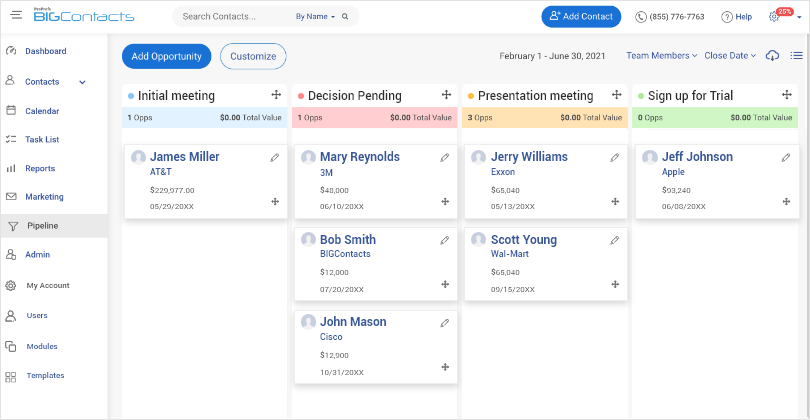“Every minute you spend in planning saves 10 minutes in execution; this gives you a 1,000 percent return on energy!”
― Brian Tracy.
A discernable sales plan is what sets your business apart in this excessive competition.
Every sales team has a strategy to maximize its revenue. But this strategy is incomplete without a clearly defined plan that lays out the exact steps needed to meet the sales quota. Such a formalized plan can ensure that you hit your targets every time, without fail!
To guarantee profitable sales outcomes, you need a strategic plan that defines your goals and the tactics that can help meet these goals within a specific time frame. But creating this document is easier said than done.
Whether you are planning to create an annual sales plan focused on long-term goals or a weekly plan to improve team productivity, this ultimate guide will help you. Find high-performing examples and the best techniques to create an effective sales plan for your business.
What is a Sales Plan?
A sales plan defines your growth objectives and highlights the course of action to meet these goals. The plan outlines the steps you will need to take to hit your sales targets. It also includes a deep analysis of your target audience and the existing sales process to identify potential problems and areas of opportunity.
This plan maps out your entire sales process and equips your team with the knowledge and resources required to close deals quickly. It acts as a blueprint for your sales team to navigate their way through the sales process.
What is the Sales Planning Process?
The end-to-end process of creating a definitive sales business plan features:
- Outlining sales activities
- Setting objectives
- Discovering challenges
- Understanding target audience
- Defining clear steps
The sales planning process takes into account available resources and allocates them appropriately.
By designing a plan that can be employed to grow sales, you can be on the way to becoming a distinguished name in your industry. This process also includes determining your strengths and analyzing risks that could hamper your business profitability.
The Benefits of a Sales Plan
Before we dive into the steps to creating a sales plan, let’s understand the significance of this process.

According to Gartner, 16.4% of the sales cycle is spent dealing with complications in internal processes. This causes inefficiencies and puts your profits at risk.
Building a sales plan allows you to overcome such roadblocks and maximize your selling potential. A plan of action to meet goals helps:
Focus on the Bigger Picture:
Along with helping maximize day to day efficiency of the organization, a sales plan also ensures that you are working towards meeting your long-term goals. It ascertains that your sales team is on the right track and does not veer off the course to success.
Eliminate Ambiguities & Inconsistencies:
Improve the efficiency of your sales process with a clearly written sales plan that leaves no room for any misunderstanding. This also reduces unnecessary delays, thereby shortening your sales cycle and enabling you to close more deals quickly.
Contribute to Employee Motivation:
90% of sellers feel burned out at work. To ensure that your sales reps do not fall into this category, you need to take measures to keep their morale high. A sales plan keeps employees productive and motivates them to perform better.
Understand Customer Needs:
A sales plan is instrumental in determining and being mindful of the specific needs of your target audience. It lets you understand customer behavior and keep it in mind while making important business decisions.
Promotes Clarity:
A sales plan provides your team with a clear course of action. It helps identify actions that yield positive results and avoid mistakes that lead to losses. This clarity allows the sales team to work more efficiently.
How to Formulate a Sales Plan
Creating a sales plan helps you execute your sales strategy efficiently. It allows you to put your resources to good use and make the most out of sales activities. Share high-performing tactics with your sales team and empower them to perform their best.
The sales plan can be defined for any time period, such as quarterly, monthly, or yearly. Furthermore, you can modify other aspects of the document based on the specific needs of your organization. Here are the steps that will help you write an effective sales plan:
1. Define Goals
To begin with sales plan creation, you need to have a clear understanding of the organization’s mission and objectives. You also need to take into account previous performance and analyze existing processes. Once you define what it is you want to achieve, it becomes easier to create an effective sales plan.
2. Identify Challenges
No business process is free of hurdles, much less a complicated process like sales. This is why you must use identify possible roadblocks and take measures to avoid them from affecting your profits.
3. Include the Right Tools
A crucial step in writing a sales plan is deploying the right tools. For instance, a CRM such as BIGContacts can be used to manage leads and their data, enabling the sales team to collaborate and track ongoing performance. Such a tool augments your sales plan and helps you make the most out of it, while mutual action plans provide a structured approach to aligning with customers.

Here are some benefits of using a CRM for sales planning:
- Collect and analyze sales data to discover trends
- Pool all resources and information in one place
- Understand customer needs and pain points
- Track interactions
- Access essential data remotely
- Keep everyone on the same page
4. Set Objectives
Set clear objectives and define the timeframe for achieving them. For example, your sales plan can list specific objectives like- reducing churn by 5% by the end of this quarter. Such broad objectives need to be a part of your sales plan so your team has a purpose towards which they work.
5. Drill Down to Specifics
You need to formulate a plan that lets you meet the sales targets. This requires you to define every action that needs to be taken down to bits. For instance, if your objective is to grow sales by 20%, you should include specific actions such as these in your sales plan:
- Assigning the right territories
- Getting more referrals
- Creating a sales script
- Having [number of] daily and weekly sales interactions
5. Develop a Template
Your sales planning process has to be structured. This is why it’s important to establish a sales strategy template that can be reused. This also brings consistency to your sales plans and helps you meet targets effortlessly. These templates can be customized as and whenever your sales team needs them.
6. Set Your Budget
Setting your budget is a vital step of the sales planning process. Determine the overall costs that the sales process will incur. This includes training costs, tools, salaries, commissions, etc. Effective budgeting will also help you set accurate targets and increase your chances of making profits instead of simply breaking even.
7. Assign Roles
Everyone in your sales team should be aware of their roles and responsibilities. This will contribute to enhanced efficiency and better sales outcomes. Include custom user roles in your sales plan and communicate them clearly to your team members to avoid any confusion or inefficiencies.
8. Strive for Continual improvement
The sales plan should suit the unique needs of your organization. This means that the plan can only be perfected with time and effort. Your sales plan should have space for changes so you can improve it continuously. Take time to determine what works well for your business and incorporate this knowledge into your plan.
Sales Plan Examples
Your sales plan steers your team in the right direction and helps set the course of action for your business. It also enables you to identify potential risks and take appropriate actions to mitigate them.
Here are some sales plan examples to help you get started with creating your own.
30-60-90 Day Plan:
One of the most popular sales plans is the 30-60-90 day plan, which focuses on the time frame of achieving certain goals. For example, you can lay out things that a new joiner in your sales team has to achieve on the 30th, 60th, and 90th day after they join the company. Or, you can set a specific percentage of retention that you wish to improve by the 30, 60, and 90-day mark.
Product Launch Plan:
This sales plan works when you are planning to launch a new product. This plan will include objectives such as carrying out extensive market research, studying competitors, strengthening brand position, creating a sales strategy, and identifying ways to maximize revenue generation.
Marketing Plan:
Another effective way to create a sales plan is to keep it closely aligned with your marketing operations. This will allow your sales team to connect with leads with more appropriate resources based on their source, preferences, and needs.
ICP:
A sales plan that focuses on your ideal customer profile or ICP will ensure that your resources are utilized judiciously. This plan saves you from wasting time on unsuitable leads. Identify the industry, budget, pain points, and other relevant attributes that make a customer an ideal fit for your business.
You can also take this quick quiz to find out if you know your ideal customer profile.
Skyrocket Profits With a Clear Sales Plan
A sales plan is imperative to business success.
While a lot of organizations try to deal with challenges as they arise, this approach to sales management is full of risks. Without a clear plan focused on day-to-day sales activities, you won’t be able to meet your long-term goals.
A business plan for sales will boost your profits and help you foresee obstacles to avoid any major losses. Creating a comprehensive plan will take some time and research. You need to keep the pain points of your sales team and the dynamics of your target market in consideration when defining this plan. A powerful sales tracking tool such as BIGContacts can be of great help with this. It can enable you to optimize your plan, understand customer needs, and track sales performance.
Now that you know what a sales plan is and what it can accomplish, it’s time to start writing your own plan and accelerate your business growth with a tool that helps you put the plan into action!
Frequently Asked Question
How do you write a sales plan?
To create an effective plan for sales, you must:
- Describe organizational objectives
- Assess previous performance
- Equip your team with the right tools
- Set budget, strategies, and roles
- Define milestones and track them routinely
What should a sales plan have?
The essential components of a sales plan are:
- Study of the target market
- Business objectives
- Sales forecasts
- Selling tactics & techniques
What are the 5 sales strategies?
The five types of sales strategies that you can employ include:
- Developing a buyer persona
- Identifying your target market
- Developing your brand image
- Creating & sharing a story
- Focusing on existing clients
FREE. All Features. FOREVER!
Try our Forever FREE account with all premium features!






